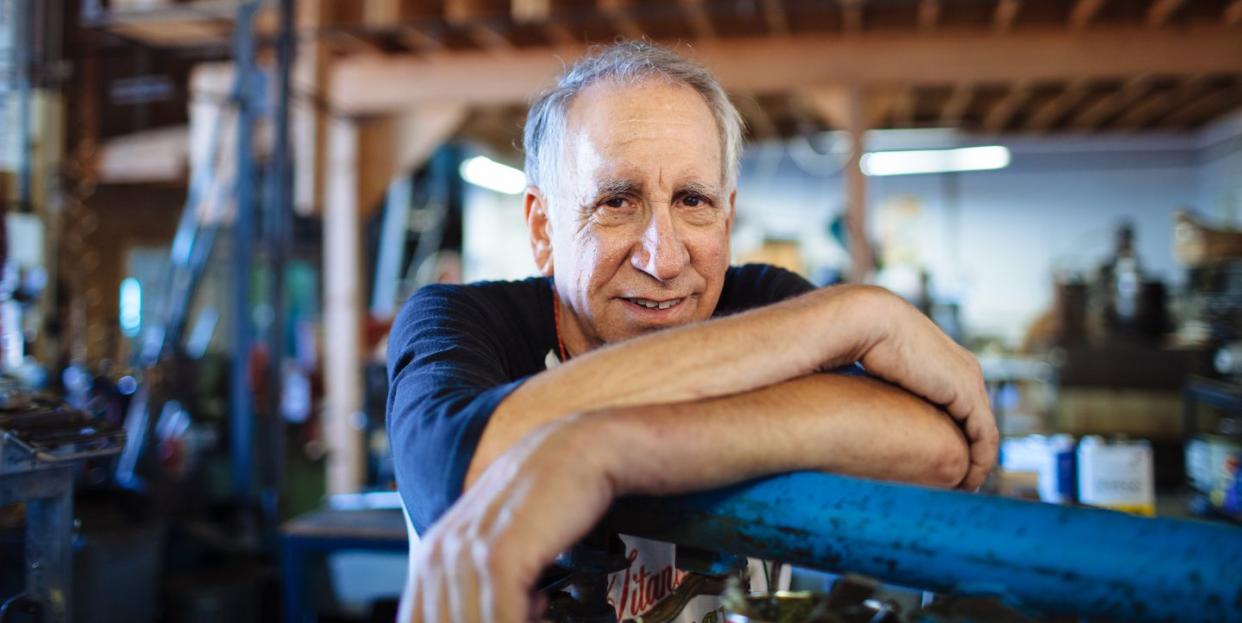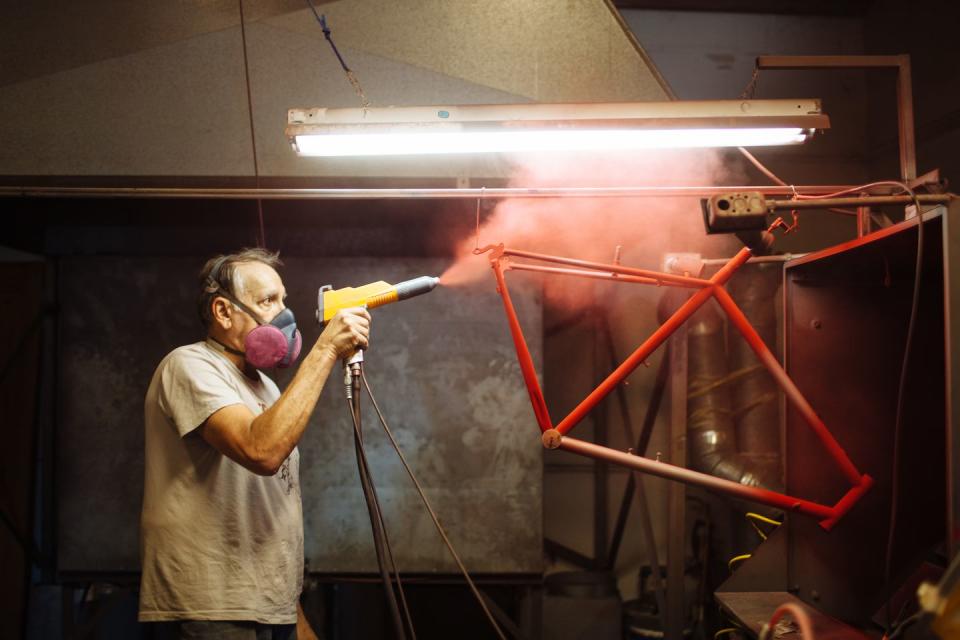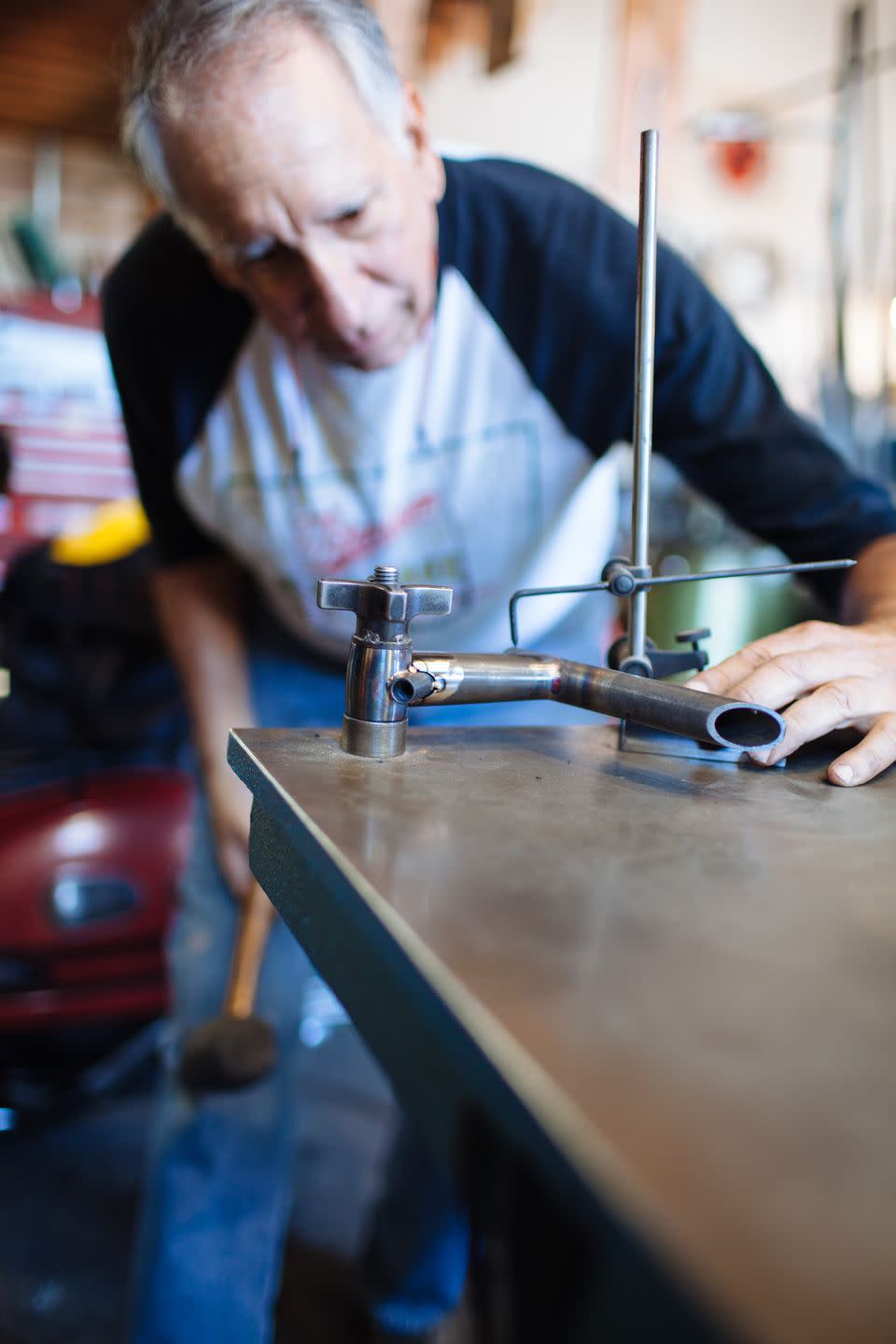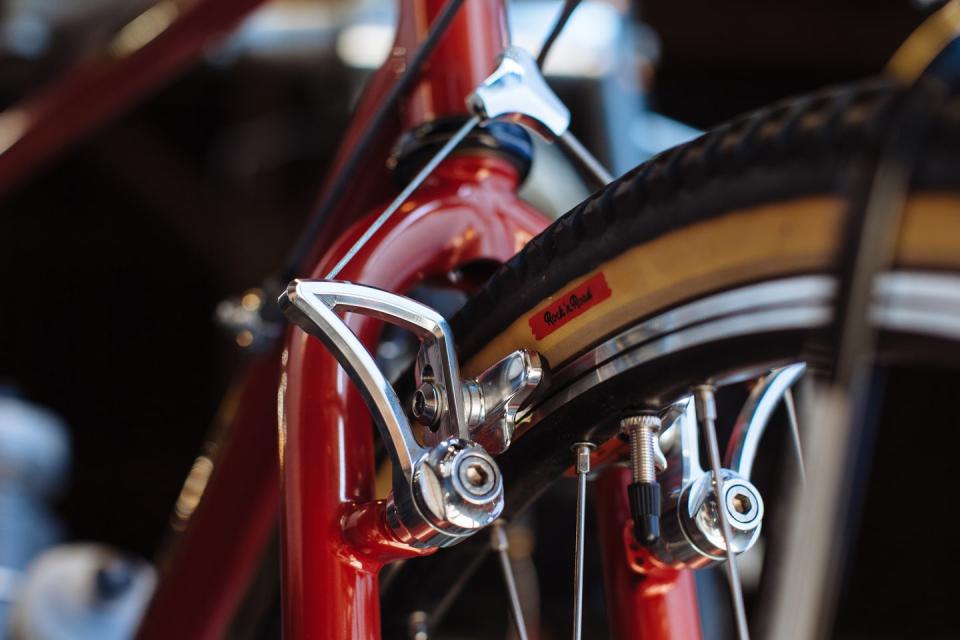Bruce Gordon, Master Frame Builder Known for His ‘Impeccable’ Touring Bikes, Passes Away

Frame builder Bruce Gordon passed away at his home on Friday at age 70.
Gordon started building steel touring bike frames in the 1970s. His highly detailed designs inspired many who came after him.
He also made components and advocated for independent bike manufacturers with his irreverent group SOPWAMTOS.
The American cycling community lost a giant last week. Bruce Gordon, a master frame builder and outspoken advocate for hand-built bikes and goods, passed away on Friday at his Petaluma, California, home at the age of 70.
Before bicycles, Gordon had his eyes on photography, working nights as a cabbie while pursuing a master’s degree at the Art Institute of Chicago. For his thesis, Gordon had planned to build a collection of portraits of his cab customers. He would ask each fare for permission to take their photo, tell them what he was working on, and then shoot from the front seat of his cab.
One night in 1970, one of his back-seat subjects called the cab company and reported Gordon. He was as good as fired. Unable to finish his thesis, he dropped out of art school. Then he bought a Raleigh three-speed.
And that’s where the Bruce Gordon story as most know it begins.

Enamored with his bike, Gordon moved to California with a dream of starting a Raleigh dealership. After a few stints at bike shops, he found himself in a frame-building class with the likes of Joe Breeze, Sam Braxton, and Dan Nall, all studying under the famed American builder Albert Eisentraut. After a brief partnership with Eisentraut, Gordon broke out on his own, establishing Bruce Gordon Cycles, in Eugene, Oregon, in 1976.
At a time when many domestic independent builders embraced racing bikes, Gordon focused on steel, lugged touring bicycles. With a keen attention to detailing, component integration, execution, and flawless finish work, his framesets helped inspire a generation of builders.
“Seeing a Bruce Gordon frame in the bike shop I worked at in 1977 made me want to try my hand at building,” said longtime friend and collaborator Paul Sadoff, of Rock Lobster fame. “My first frames were really crappy attempts at building like he did. His aesthetic was impeccable, as was his execution.”

Frame builder Stephen Bilenky shared a similar story. “Going to the [New York Bicycle and Toy] show and seeing a salmon-pink [Bruce Gordon] bike with fastback stays and a Fillmore West-inspired decal blew my mind-and basically made me want to make my own frames,” he said. “The little holes in the fork crown did me in.”
Yet Gordon did not consider himself merely a frame builder. He instead preferred the term constructeur, more commonly used in France, which refers to a whole bike builder, someone who crafts components as well as frames. In addition to stunning cantilever brakes, bullet tail lights, cranks, toe clips, and racks, Gordon was probably best known for his Rock n’ Road tires, arguably the first production 29er tire, and one that remains a cult classic.
Gordon’s biting sense of humor was legendary. “He was the Henny Youngman of bike builders,” Bilenky said. “He always had several pre-configured jokes to tell.” Humor was also a tool for Gordon to speak hard truths in an industry that, he felt, was moving in a sometimes counterproductive direction.

A vocal advocate for craftspersons, Gordon co-founded SOPWAMTOS-the Society of People Who Actually Make Their Own Shit-in the early ’90s after a wave of acquisitions sent production for many independent brands overseas. The group champions makers in the cycling community while also poking fun at trends in large-scale overseas bike production through humor and spectacle.
The society was eventually banned from Interbike for disrupting the show floor with its own parade. It has since been resurrected for several appearances at the North American Handmade Bicycle Show.
Gordon hung up the torch and closed his Petaluma shop in 2017, auctioning off his tools, equipment, memorabilia, and personal bicycle collection. In retirement, he could be found frequenting his favorite restaurants, Water Street Bistro for lunch and Dempsey’s (which has a plaque with his name at the bar) for dinner.
“His bikes were so amazing,” Bilenky said. “To me, he defined the category of elegant touring bikes. His bikes inferred that touring bikes deserved the same level of thoughtful design as a road racing lightweight. I aspired to make bikes to his level of creativity and solid craftsmanship. I have a 35-year-old Bruce Gordon rack on my personal bike.”
('You Might Also Like',)

